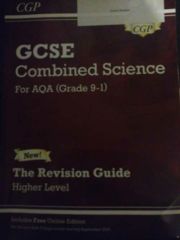![]()
![]()
![]()
Use LEFT and RIGHT arrow keys to navigate between flashcards;
Use UP and DOWN arrow keys to flip the card;
H to show hint;
A reads text to speech;
28 Cards in this Set
- Front
- Back
- 3rd side (hint)
|
What sub atomic particles does the nucleus contain? |
Protons and neutrons |
|
|
|
Which SA particle has ___ charge: 1. Positive 2. Neutral 3. Negative |
1. Proton 2. Neutron 3. Electron |
|
|
|
What's different about isotopes from the usual element |
Different amount of neutrons |
|
|
|
What's a compound? |
2 elements that are chemically bonded |
|
|
|
What type of bond contains a metal and a non-metal |
Ionic |
|
|
|
Losing or gaining electrons turns the atom into what? |
Ion |
|
|
|
What's the difference between a mixture and compound |
Mixtures can be separate easily as they are not chemically bonded |
|
|
|
What separation technique is used to separate an insoluble solid from a liquid |
Filtration |
|
|
|
Two ways to separate soluble solids from solutions |
1. Evaporation 2. Crystallisation |
|
|
|
What can be used to separate solutions? |
Distillation |
|
|
|
What can be used to seperate a mixture of liquids (and in particular which one) |
Fractional distillation ( crude oil) |
|
|
|
Who designed the plum pudding model |
JJ THOMPSON |
|
|
|
Who proved the plum pudding model wrong and how? |
Rutherford, alpha particles scattering experiment |
|
|
|
Who proposed the nuclear model |
Bohr |
Niel |
|
|
Who discovered the proton |
Rutherford |
|
|
|
What did Mendeleev do that made scientists accept his periodic table |
Leave gaps and predict new elements |
|
|
|
How did the elements used to be arranged before Mendeleev |
By their atomic mass |
|
|
|
What did Mendeleev change about the periodic table? |
The order of some of the elements to make their properties fit. This makes the groups have similar properties. Also left gaps |
|
|
|
Properties of metals: (3) |
1. Strong and malleable 2. Conduct heat / electricity 3. High melting / boiling points |
|
|
|
Group 1 trends DOWN the group:(3) |
1. Increasing reactivity 2. Lower melting/boiling points 3. Higher RAM |
|
|
|
What does a reaction with group 1 elements and water produce |
Hydrogen, and a vigorous reaction |
Gas |
|
|
What gas do group 1 metals react with to form metal ___ |
Oxygen, oxides |
Breath |
|
|
Group 7 trends DOWN group:(3) |
1. Less reactive 2. Higher melting / boiling points 3. Higher RAM |
|
|
|
What can reactive halogens do to less reactive ones |
Displace |
D_________ |
|
|
What is special about group 0 elements |
Inert, unreactive |
|
|
|
Pattern down group 0: |
Boiling points increase |
|
|

|
:) |
|
|
|
What is the radius of an atom? |
1x10^-10 |
|

